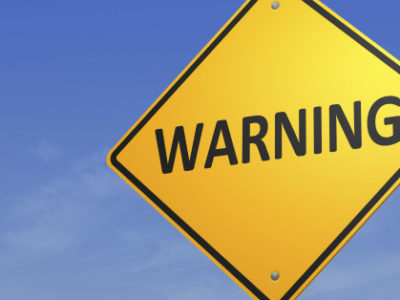A Trade Checklist Helps You Avoid Losing Trades
A major reason why traders struggle is because they approach trading from a disorganized and narrow-minded perspective. The average trader believes that trading successfully is only about finding the one indicator that gets them in at the best possible price to maximize his profits with small risk. Not all trades will be winning trades – granted – but to maximize the chance of success, a structured trading process can help you avoid losing trades. In the following article we take you through a seven step process that can help you trade with maximum confidence and a lower likelihood of breaking the rules.
#1 Does the setup meet your entry criteria? Can you easily spot the entry?
A good rule of thumb is that, if you can spot the trade easily and quickly, chances are high that you are correct. The longer it takes for you to figure out whether it is an actual entry signal or not, the worse the trade setup usually is. Many traders report that the good trades jump right at them without having to ponder and argue with themselves.
#2 Is the trade in your trading plan? Why not?
It does not matter which interview or biography you read, all successful traders from Marty Schwartz, to Paul Tudor Jones, to Ed Seykota, each trader mentions the importance of having a detailed trading plan. The reason why a trading plan is so important for your trading success is that a trading plan is usually written when the markets are closed and you have the chance to look at your charts without the stress and pressure of moving prices.
Trades who are not included in your trading plan are usually not there for a reason; because they should be avoided. It is therefore important to ask yourself whether you can take the trade with a clear conscience or if it would be better to pass on this particular trade if it is not in your trading plan.
#3 Is the trade in line with the direction of the trend? If not, are your reasons to enter good enough?
Although this point depends slightly on your overall trading strategy, trading with the trend can serve as an additional filter to keep you out of losing trades. Trading with the trend often results in trades with less drawdown, a smoother trade development and less psychological pressure. If you want to minimize the risk of losing trades, adding the additional filter of avoiding counter trend trades is another layer that can protect you.
#4 Are important news announcements scheduled?
Especially for intra-day traders, keeping track of upcoming news events is important. The news might not always change the direction the market is going, but news releases significantly increase short term volatility. Intra-day traders usually operate with relatively tight stops and are therefore vulnerable to price spikes caused by news announcements. Checking the news calendar for the day ahead takes less than 2 minutes and can reduce the likelihood of running into problems when you are about to take a new trade shortly before an important news event.
#5 Are risk and reward acceptable?
This is a point most traders get totally wrong because the general knowledge about the importance of the risk:reward ratio is incorrect. The combination of your risk:reward ratio and your winrate tells you immediately whether you can take the trade or to avoid it. For example, if your trade has a risk:reward ratio of 3:1, it means that for every 4 trades you need to have at least 1 winning trade to break even, which equals a 25% winrate. The formula to calculate the required winrate is: [1/(1 + Risk:Reward Ratio)]. The table below illustrates the point further:
| Risk:Reward Ratio | Required Winrate |
| 1:1 | 50% |
| 2:1 | 33.3% |
| 3:1 | 25% |
However, it is important that you define stop loss and take profit orders first and then see whether the combination of risk:reward ratio and winrate add up. Do not try to manipulate your risk:reward ratio in order to get a better value!
#6 How do you feel emotionally?
Trading is not only about what happens on your charts; the mental aspect of trading is of great importance when it comes to performing at your best level. Your emotional state significantly influences how you make trading decisions and perceive trading signals. Stress, worries and anxieties that you carry over from your daily life can be harmful for your trading decisions. But being too euphoric, exuberant and ecstatic can also lead to over-trading, neglecting risk and money management rules, or making other irrational decisions.
Trading is a performance game and it is therefore necessary that you are able to perform at your very best level.
#7 I accept to lose
Ask any trader and he will tell you that losing is part of trading; but when the trade is on, markets are moving in real time and your money is on the line, the perspective changes dramatically. Widening stop loss orders and adding to a losing position is what traders will do to avoid the inevitable. The two described trading decisions are a clear sign that you have not fully accepted the chance of taking a loss.
Be honest to yourself and before you pull the trigger, accept the fact that you cannot tell whether a trade will be a losing trade or a winner, before it either reaches your take profit or stop loss order.
Conclusion: Minimize your losses by following a structured trading approach
Following a structured approach can reduce the likelihood of breaking your trading rules. Especially when you are a new trader or lack discipline, printing out the trade checklist and checking it off for every trade, and keeping it right next to you will significantly increase your ability to stick to your rules.














Pingback: How To Minimize The Chance Of Losses - Tradeciety Guestpost